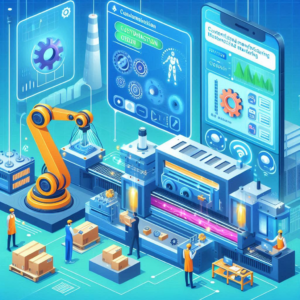
1. Introduction
The evolution of manufacturing paradigms has given rise to customized manufacturing (CM). This model effectively addresses the growing demand for personalized products. Traditional mass production methods often fall short in meeting diverse consumer needs. Customized manufacturing marks a vital shift toward flexibility, increasingly supported by cloud migration services. This allows manufacturers to produce a broad array of products in smaller quantities tailored to individual customer specifications.
The concept of customized manufacturing is anchored in the principles of Industry 4.0. This emphasizes the integration of advanced technologies, including the Internet of Things (IoT), artificial intelligence (AI), and cloud computing into manufacturing processes. This integration facilitates real-time data exchange. This enables manufacturers to respond adeptly to customer demands and market fluctuations.
2. The Role of Cloud Migration Strategy
Customized manufacturing creates products tailored to the unique requirements of individual customers. This model contrasts with traditional manufacturing, which emphasizes efficiency and cost-effectiveness through mass production.
Key aspects of the customized manufacturing concept include:
1. AI-Driven Production – Utilizing artificial intelligence to optimize workflows, automate tasks, and improve decision-making.
2.Flexible Manufacturing Systems (FMS) – Adaptable production lines that can quickly adjust to varying product designs and volumes.
3.Mass Customization – Combining the efficiency of mass production with the flexibility of custom-made products.
4.Digital Twins & Simulation – Creating virtual models of production systems for real-time monitoring and predictive analytics.
5Additive Manufacturing (3D Printing) – Enabling rapid prototyping and on-demand production of complex, customized parts.
6.Cloud & Edge Computing – Leveraging platforms like GCP AI services for real-time data processing and intelligent automation.
3. Characteristics
Customized manufacturing possesses several distinct features that differentiate it from traditional production methods:
1. Smart Interconnectivity: Systems operate within a cyber-physical environment. Machines, sensors, and data systems are interconnected. This interconnectivity is bolstered by advanced communication technologies, such as the Industrial Internet of Things (IIoT).
2. Dynamic Reconfiguration: The ability to quickly reconfigure production resources is a hallmark of customized manufacturing. As customer demands evolve, systems must adapt efficiently.
3. Massive Volumes of Data: Customized manufacturing generates vast amounts of data from interlinked devices. This data enhances performance optimization, predictive maintenance, and decision-making.
4. Personalized Production: The core objective is to deliver products meeting the distinct specifications of individual customers.
5. Resource Optimization: Efficient use of resources, including materials, labor, and energy, is emphasized in customized manufacturing.
6. Enhanced Quality Control: The complexity necessitates robust quality control measures. Real-time monitoring and data analysis help identify and remedy quality issues swiftly.
7. Collaboration and Integration: Customized manufacturing involves collaboration across various stakeholders, including suppliers and logistics providers.
4. Opportunities and Challenges
While customized manufacturing offers numerous opportunities for improved competitiveness and customer satisfaction, it also presents several challenges:
1. Complexity of Production: Transitioning from mass production to customized manufacturing adds complexity to production planning.
2. Investment in Technology: Implementing customized manufacturing necessitates substantial investment in advanced technologies.
3. Supply Chain Coordination: Close collaboration with suppliers and logistics providers is essential for meeting customer expectations.
4. Data Security and Privacy: Increased reliance on data can raise concerns about data security.
5. Skill Development: A skilled workforce in advanced technologies is vital for transitioning to customized manufacturing.
5. Implementation
Implementing customized manufacturing requires several key steps:
1. Assessment of Customer Needs: Conducting thorough market research is essential to understand customer preferences.
2. Investment in Technology: Investments in advanced technologies facilitate real-time data collection.
3. Development of Flexible Production Systems: Creating flexible systems may involve modular equipment.
4. Integration of Supply Chain Partners: Establishing strong relationships with suppliers promotes successful collaboration.
5. Continuous Improvement: Ongoing evaluation and enhancement are essential for success.
6. Conclusion
Successful implementation requires careful planning, technology investment, and collaborative strategies. As manufacturers navigate the complexities and opportunities of this new paradigm, they shape the future of the manufacturing industry.
At Cloudastra Technologies, we specialize in software services tailored to meet your business needs. Visit us for more business inquiries, and let us help you enhance your operations.
Do you like to read more educational content? Read our blogs at Cloudastra Technologies or contact us for business enquiry at Cloudastra Contact Us.